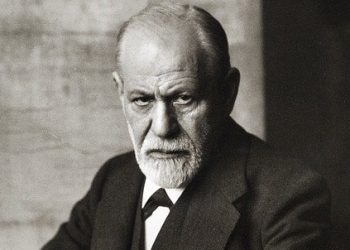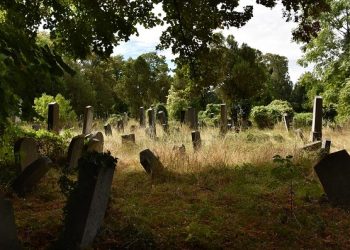Although this theater was secondary to the Habsburgs’ theater (the Burgtheater), today it also plays an important role in the art and culture scene of Vienna. The theater building is ancient and impressive in its beauty, and many important events for the city are held there. The theater hall includes 832 seats, making it one of the largest among theaters in German-speaking countries.
The Story of the People’s Theater
The Volkstheater, which means “People’s Theater,” was built in 1889 (20 years after the construction of the Habsburgs’ theater). The construction of the theater was carried out following a request from the city’s residents who wanted a theater for themselves, not just a royal theater for the elite. The construction of the theater was initiated by the poet Ludwig Anzengruber and Felix Fischer.
The theater was built by the two architects Ferdinand Fellner and Hermann Helmer, who also built the German theater in Hamburg. The motifs the architects used reflect their affection for an artistic style that combines historical elements.
The “People” in People’s Theater
As the theater’s name suggests, it was intended for all residents of Vienna. The founders of the theater wanted the city’s residents to be able to enjoy high-quality plays and absorb Viennese culture. For this reason, it hosted theater performances that presented anecdotes from classical and modern literature alongside more traditional plays. The emphasis of the theater’s performances was on stories by Austrian writers from the past and present. To allow a large portion of the city’s residents to enjoy the theater performances, a spacious auditorium was built, and the entrance fees for the shows were very low. The theater opened to the general public in 1889 with a play by one of its founders, Ludwig Anzengruber. The play was called “Der Fleck auf der Ehr.”
The People’s Theater quickly became a resounding success, especially among the middle class in Vienna, the bourgeoisie, who saw it as a legitimate competitor to the theater of the nobility. In fact, the company that managed the royal theater, believed that within a few years the People’s Theater would go bankrupt and be annexed to the royal theater, but they had to stand by and watch as the People’s Theater succeeded in a big way.
In the 1920s, the theater experienced a period of prosperity and flourishing while under the management of Alfred Bernau and Rudolf Beer. During their time, the theater not only had great performances but also the best actors, designers, and directors.
Today, the theater is funded by the City of Vienna and the Republic of Austria.
The Theater Building
The theater building was built in the Historicism style by the architects Ferdinand Fellner and Hermann Helmer, who were very popular at that time and also built theaters in Hamburg, Budapest, and Prague. This was the first theater building to be fully illuminated by electricity.
At the center of the building is the large auditorium with few private boxes, unlike the Habsburgs’ theater, which included many private boxes for the emperor and his family. In the past, the theater’s auditorium was larger than that of the Habsburg family’s theater and had 1,843 seats. Today, it has only 832 seats and is the second largest in Vienna.
The rooms surrounding the auditorium are extremely beautiful. There are several halls decorated with ceiling paintings and wall carvings. The most popular halls in the building are the Red Bar, a spacious hall with a modern beverage bar for the convenience of theater visitors, and the White Salon, which is used for intermissions during performances.
In 1890, the building was expanded, and in the early 20th century, additional rooms and exterior decorations were added.
One of the theater rooms that still exists today, a decorated wooden room, is called the Adolf Hitler Room. It is an elaborate room that was specially prepared for Hitler’s visit during the time Austria was under Nazi rule.
During the war in 1944, the theater building was bombed, and parts of it were destroyed. In 1945, extensive renovations were carried out, but the building’s dome was only completed in 1980. In 2015, renovations were carried out again to upgrade the comfort and acoustics for visitors.
On the left side of the theater, there is a statue and a memorial for the beloved actress Hansi Niese, created by Josef Müllner. The statue was erected in 1938.
Performances at the Theater
The theater is active, with daily performances and concerts. You can see the current list of performances here. Please note: the performances are in German.
In addition, on Sundays, the Red Bar room becomes a meeting place for literature lovers, and sometimes live music performances or parties are held there until the early hours of the morning.
Essential Information for Your Visit
The theater is in a central location, close to other points of interest such as the Hofburg Palace, the MuseumsQuartier, and the Mariahilfer shopping street. You can pass by and be impressed by the beauty of the building (if you’re lucky, you can also go inside and take a glimpse of the beautiful rooms).
How to get to the People’s Theater?
The easiest way is to take the subway, which stops right next to the theater. The purple line, U2, and the orange line, U3, both go to the theater. The station’s name is Volkstheater. Look for the signs leading to the theater and go up the escalators towards the street. When you exit the station, you will see the theater building.
Address: Arthur-Schnitzler-Platz 1, 1070 Wien
Map:


















